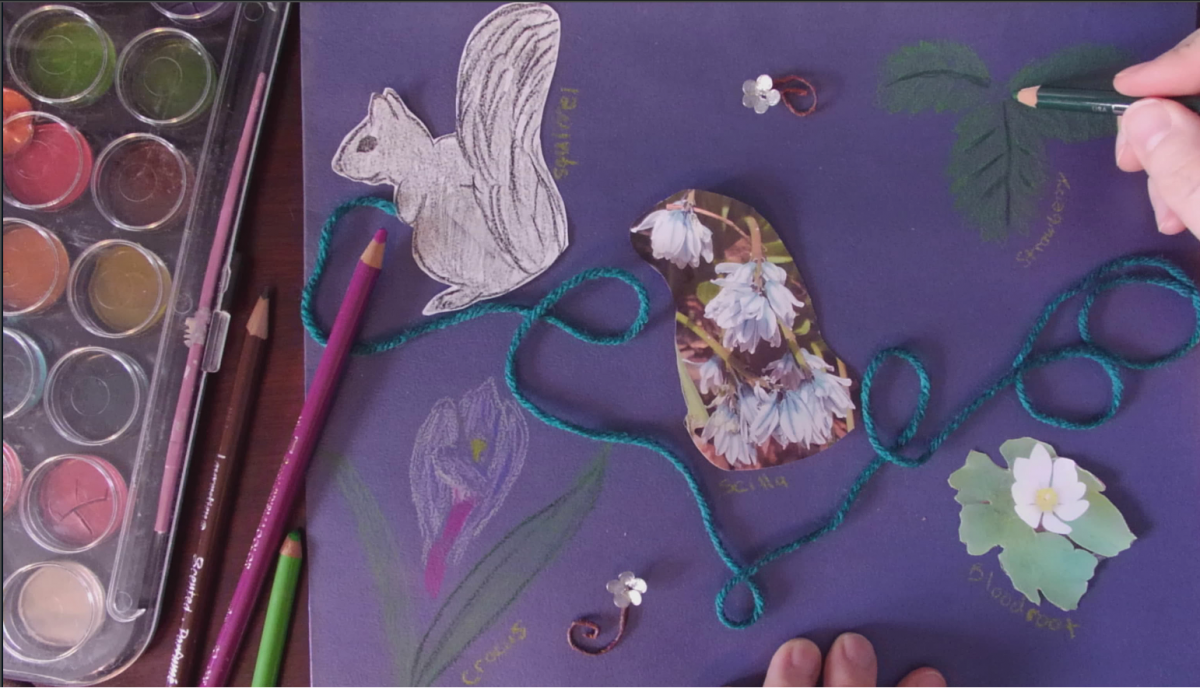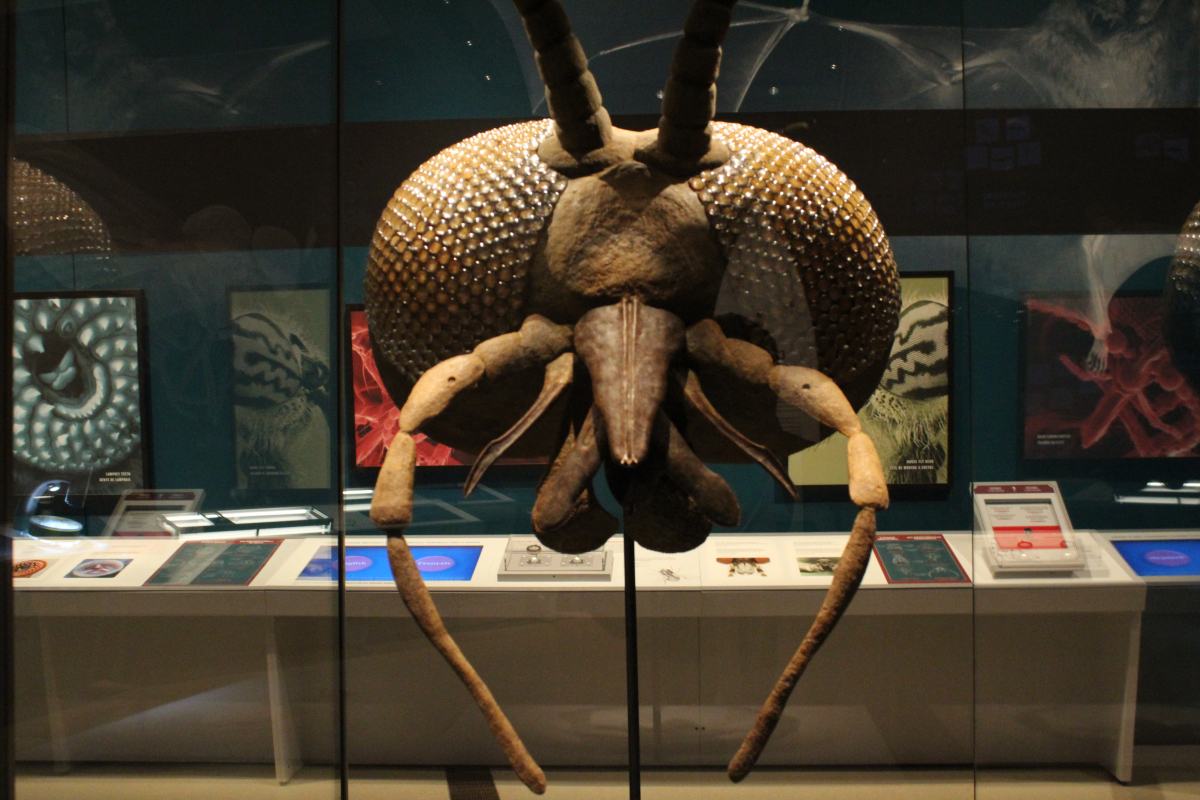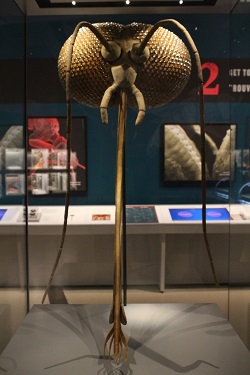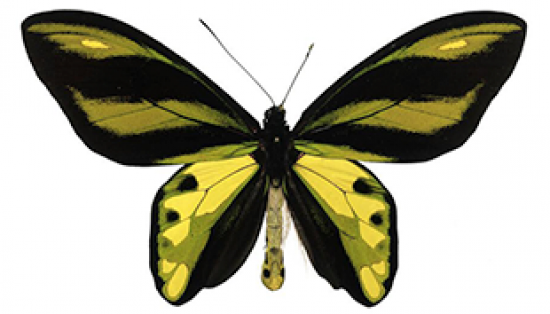Visit ROM Storytime for a discussion of children’s books for young learners with ROM educator Sarah Elliott.
This week, we explore Blackflies by Robert Munsch, illustrated by Jay Odjick. Stay tuned after the story summary for a Q&A on how the story connects to ROM objects, and try a story-inspired creative activity.
Read aloud with permission from Scholastic Canada.
In the springtime, our local communities see the return of many different kinds of living things. It might be blackflies, like the ones Helen and her family ran into in this week’s story, but there are lots of other living things out there to discover. For this week’s creativity challenge, you’ll investigate the living things that you can find in your local neighbourhood. They might be things you find in your yard, things you spot from your window, things you meet inside your own home, or things you discover on a healthy walk around your street.
- Take notes about (or photos of) the plants, bugs, flowers, fungi, and animals you spot.
- Get family to send you pictures, too!
- Identify as many as you can, using books, your family’s knowledge, or tools like Seek, by iNaturalist.
- Create a collage of the springtime visitors to your neighbourhood. You could use drawings, printouts of photos you took, printed pictures from the internet, or mix them all together, along with anything you have handy. Get creative!
- Share your springtime collages with us @ROMtoronto #ROMatHome.
How do blackflies eat?
First, they have to find the food. If you’ve ever been on the receiving end of a blackfly bite, it might seem like they’re carefully plotting and chasing you down, but it’s all thanks to their amazing senses. The antennae and legs of insects that feed on blood have tiny hairs covered with little sensors that can detect the temperature of a warm-bodied host. Most bloodfeeders also have sensors on their bodies that can detect the chemical (carbon dioxide) that we breathe out from up to 35m away. This is why it seems like a blackfly is chasing you — they’re following your heat and smell!
Once they get to you, getting the blood out is a bit trickier. A blackfly has biting mouthparts made of 4 different parts. The first part is a protective covering called the labium that pulls back when the black fly is ready to bite. A second set of mouthparts called maxillae grab on to the skin, and little curved teeth on the edges act like an anchor so the blackfly doesn’t lose its grip. Then, the third set of mouthparts, the mandibles, snip the skin like tiny scissors until blood begins to flow. Finally, the labrum has a channel on the underside to draw blood up in to the blackfly’s mouth.
Would blackflies and mosquitoes really hunt together?
They can absolutely be found in the same places and would feed on the blood of the same kinds of living things (mostly warm-bodied animals). Mosquitoes live everywhere on Earth except for Antarctica and a few other very cold places. So do blackflies, but there are a lot more of them in northern wooded areas near large rivers and lakes. However, blackflies are mainly active during the day, and while you've probably been bitten by a mosquito while out for a daytime walk, mosquitoes are very active at night.
Would they hunt together like the mosquitoes and blackflies in this week’s story to form huge clouds that carry people (and wolves, and bears) into the woods? No, but it definitely made the story a lot more interesting!
Are blackfly bites or mosquito bites worse?
That all depends on how you define “worse!”
Mosquitoes feed with a long, skinny mouthpart called a proboscis. It acts like a bit like the needle a doctor uses to give you a shot (or, in the mosquito’s case, a few very, very tiny needles), but the hole it makes in your skin is very small and usually doesn’t bleed. The mosquito sticks its proboscis into a tiny blood vessel beneath the surface of your skin and sucks it up like a straw. Most mosquito bites are painless, and you usually don’t even notice the mosquito is there until it’s done.
Blackflies use their mandibles like little scissors to cut a small hole in the skin until blood starts flowing. Instead of going under your skin to get the blood, they bring it up to them, resulting in a larger bite that can hurt. This is why most people think that blackfly bites are worse.
But that’s not the end of the story! As soon as blood starts flowing, your body starts to stop it. Which makes sense — blood should stay inside the body where it belongs! This process is called clotting, and clotting is bad news for a blood-feeding insect. Imagine drinking a fruit smoothie and getting a big chunk of fruit stuck in your straw. That’s what a blood clot is like for a blood-feeding insect. To fight it, most blood-feeders have a chemical in their saliva (yep, we mean bug spit) that stops the blood from clotting. That saliva is what our bodies have an allergic reaction to, which is why some people have itchier bites than others — everyone reacts a little bit differently.
So even though blackfly bites make a bigger hole in your skin than mosquito bites do, that part’s over fast and heals quickly; the itching can last a lot longer. A different answer to the question “which bite is worse” could be “whichever makes you itchier!”
Helen loves springtime — except for the gazillions of blackflies and mosquitoes. But she has a plan. . .
One day Helen wakes up and it’s SPRING! The snow has melted and the sun is shining. But Helen knows that the blackflies will be coming out soon. So she does what any smart kid would do: she sends her little sister outdoors to check! When the blackflies and mosquitoes carry her away, Helen tells her dad, who rushes outside and is carried away himself. Now Helen needs to rescue BOTH of them, along with a wolf and a very clever bear. . .
—Scholastic Canada







